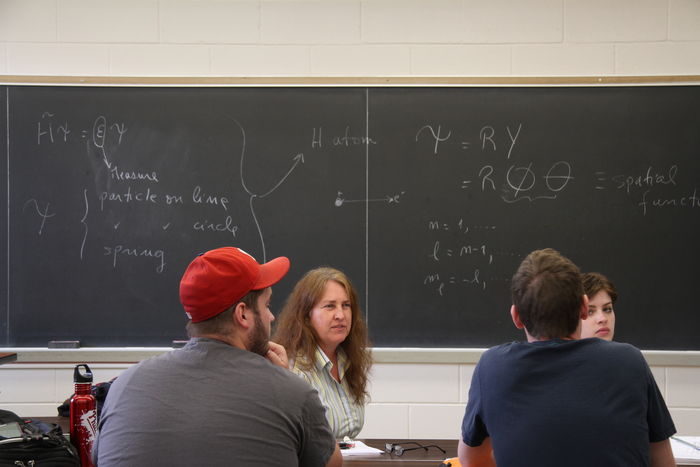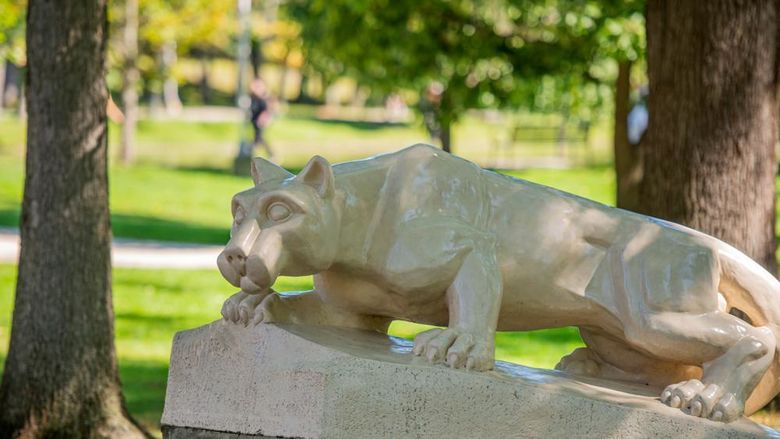UNIVERSITY PARK, Pa. — Penn State faculty teach in many different ways, in courses of all different types and sizes, filled with students who are just as diverse. In 2014 and 2015, faculty teaching and students learning were captured by a photographer who has spent more than a decade taking images of learning environments.
From 4 to 6 p.m. on Sept. 6, Penn State will celebrate the importance of faculty to the teaching mission of the University during an event, “Tribute to Excellence: Through a Photographer’s Lens,” at the Nittany Lion Inn at University Park. The event presents the work of photographer Martin Springborg during visits to some of Penn States’ colleges and campuses. The event is sponsored by the Schreyer Institute for Teaching Excellence.
Springborg himself will be on hand to discuss his photodocumentary project, which tells a story about teaching and learning at Penn State and helps to celebrate the mission of faculty and their interactions with their students. Those interested in attending can register here. Registration is encouraged but not required. University President Eric Barron will give opening remarks, and Provost Nick Jones and Vice President and Dean for Undergraduate Education Rob Pangborn will also attend.
Angela Linse, executive director and associate dean of the Schreyer Institute for Teaching Excellence, said Springborg’s images help showcase the importance of faculty teaching across the University and the critical role they play in guiding students’ learning.
“Teaching is the first core mission of Penn State,” Linse said. “Without faculty committed to their students’ learning, the University as we know it would not exist.”
The faculty members had a chance to reflect on the images of themselves in the classroom as a way to examine their work from a fresh angle. Valerie Cholet, an instructor of kinesiology at Penn State Berks, wrote in her reflection that movement is essential in the learning process of her subject.
“As such, I felt it might also be a unique opportunity for the audience to view learning from a kinesthetic perspective,” she wrote.
“One significant piece which was evident to me was the eye contact I maintained with my students,” Cholet wrote. “I felt that was a visual representation of the importance I place on each of my students and their ability to learn. I was relieved to see that what I ‘think’ is happening in the classroom actually ‘is’ happening in the classroom.”
She added that the photodocumentary project motivated her to look at her teaching — in all of her classrooms — from a different perspective.
Conrad Tucker said photographs of his engineering design class captured the essence of the process.
“I’m inspired by the attentiveness expressed by students and their eagerness to acquire new knowledge,” wrote Tucker, who is an associate professor of engineering design in the College of Engineering. “The images emphasize the importance of visual communication and tactile feedback during the generation of ideas.”
In his reflection on the photographs, Tucker said he noticed a student looking at their phone. At first, Tucker said it appeared the student wasn’t paying attention, but closer inspection realized the student was actually searching for information related to their team’s project.
“This photo also emphasizes the need for individuals in society to not be so quick to pass judgment, as initial judgments could in some cases be incorrect,” Tucker wrote. “It is amazing how an activity that sought out to capture the engineering design process could end with a broader social commentary.”
Other faculty noted that comments from Springborg and others revealed some aspects of the classroom that they would not have otherwise noticed.
A total of 118 photographs will be on display from Springborg’s time at Penn State, alongside reflections from the pictured faculty.
“These photographs validate the teaching and learning that is at the heart of education, both in terms of being at the core of what we do and faculty commitment to students’ learning that comes from the heart,” Linse said.
Martin Springborg has seen the inside of many classrooms during his 13-year project of photographing learning in higher education. His pictures show realistic perspectives of modern teaching and learning environments, not just stereotypical lecture halls.
“It’s important to show the reality of teaching and learning in higher education — for both internal and external audiences,” Springborg said. “I would say it’s especially important for the external audiences, because the way higher education is depicted in popular media is inaccurate and gives many prospective students the idea they don’t belong there.”
Springborg wrote in a 2016 paper, along with coauthor Cassandra V. Horii, that the photographs in his Teaching and Learning Project “draw upon the art and documentary photography traditions in order to prompt faculty to reflect on their teaching practice and speak to audiences both internal and external to post-secondary institutions about the state of higher education.”
He’s known for his work at 17 other higher education institutions, such as Brown University, University of Michigan, University of Virginia and Caltech. The latter was the focus of a recent article in the Chronicle of Higher Education.
“In many ways, the people (at Penn State) remind me of my own system, Minnesota State,” he said. “What stands out to me about Penn State is the diversity in foci from one campus to the next. I suppose that memory could be a product of the classrooms I photographed at each location. On one trip, for example, I recall working with students who were collecting and analyzing soil samples in the winter (there was some digging of snow required) and from there, photographing a class teasing apart the finer points of creative writing samples.”
Springborg is himself an educator and it was out of a class he was teaching in 2005 that the Teaching and Learning Project was born. He wrote, “I gave my students and myself an assignment: to document in photographs our lives and the lives of our peers outside the safe confines of our studio classroom.”
In the 2016 paper, Springborg and Horii drew comparisons between the Teaching and Learning Project and photographer Robert Frank’s well-known photodocumentary book “The Americans,” with images gathered from across the United States in the 1950s. These candid photographs are in the tradition of street photography where people are acting more naturally in their environments and not posed in a studio. Springborg continues that tradition with his images of teaching and learning.
Springborg is a faculty member for the Minnesota State Colleges and Universities system, an educational developer, and he lives in Inver Grove Heights, Minnesota.







